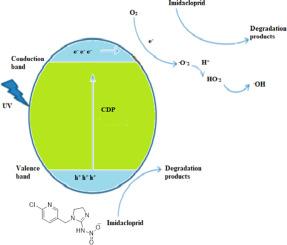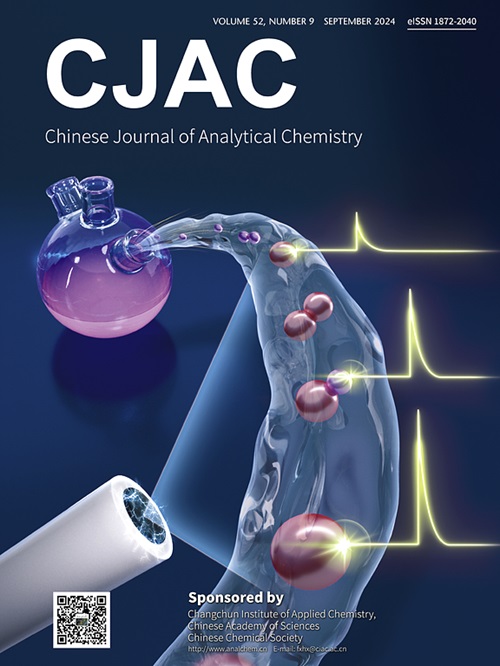光催化降解吡虫啉的掺杂碳点(CDP)合成及表征
IF 1.3
4区 化学
Q4 CHEMISTRY, ANALYTICAL
引用次数: 0
摘要
研究了利用荧光碳点(CDP)光催化降解吡虫啉的方法。以果糖、钯和乙二胺为原料水热合成了CDP,并通过傅里叶变换红外光谱(FTIR)、扫描电子显微镜(SEM)、荧光光谱仪、紫外可见光谱(UV-Vis)和能量色散x射线光谱(EDX)技术对其进行了表征。利用优化后的工艺条件对关键决定因素进行了优化。使用5.0 mg L-1的吡虫啉,pH值为10,在365 nm波长下,在40 min内光催化降解了97% %的吡虫啉。催化剂负载与反应时间有效相关,强调了提高降解效率的关键作用。拟一阶和二阶动力学模型与拟一阶动力学模型拟合效果最好。CDP可以重复循环使用,使其降解效率保持在合理的范围内。结果表明,碳点作为一种具有成本效益和环境安全的有效光催化材料用于水的修复具有广阔的应用前景。本文章由计算机程序翻译,如有差异,请以英文原文为准。

Synthesis and characterization of Pd-doped carbon dots (CDP) for the photocatalytic degradation of imidacloprid
An effective photo catalytic method utilizing fluorescent carbon dots (CDP) has been developed for the degradation of imidacloprid. The CDP were synthesized hydrothermally using fructose, palladium, and ethylene diamine and they were characterized via Fourier transform infrared spectroscopy (FTIR), scanning electron microscope (SEM), spectrofluorometer, ultraviolet-visible spectroscopy (UV-Vis), and energy dispersive X-ray spectroscopy (EDX) techniques. The key determinants were optimized and using the optimized conditions. 97 % photocatalytic degradation of imidacloprid was achieved in 40 min at 365 nm using 5.0 mg L–1 of imidacloprid at pH 10. The catalyst loading, and the response time were effectively correlated, emphasizing the critical role in improving the degrading efficiency. The pseudo- first order and second order kinetic models were applied to the data showing the best fitting with pseudo-first order kinetic model. The CDP can be used for repeated cycles maintaining its degradation efficiency within reasonable limits. The results highlighted the promising potential of using carbon dots as effective photocatalytic materials which are cost effective and environmentally safe for water remediation.
求助全文
通过发布文献求助,成功后即可免费获取论文全文。
去求助
来源期刊
CiteScore
3.60
自引率
25.00%
发文量
17223
审稿时长
35 days
期刊介绍:
Chinese Journal of Analytical Chemistry(CJAC) is an academic journal of analytical chemistry established in 1972 and sponsored by the Chinese Chemical Society and Changchun Institute of Applied Chemistry, Chinese Academy of Sciences. Its objectives are to report the original scientific research achievements and review the recent development of analytical chemistry in all areas. The journal sets up 5 columns including Research Papers, Research Notes, Experimental Technique and Instrument, Review and Progress and Summary Accounts. The journal published monthly in Chinese language. A detailed abstract, keywords and the titles of figures and tables are provided in English, except column of Summary Accounts. Prof. Wang Erkang, an outstanding analytical chemist, academician of Chinese Academy of Sciences & Third World Academy of Sciences, holds the post of the Editor-in-chief.

 求助内容:
求助内容: 应助结果提醒方式:
应助结果提醒方式:


